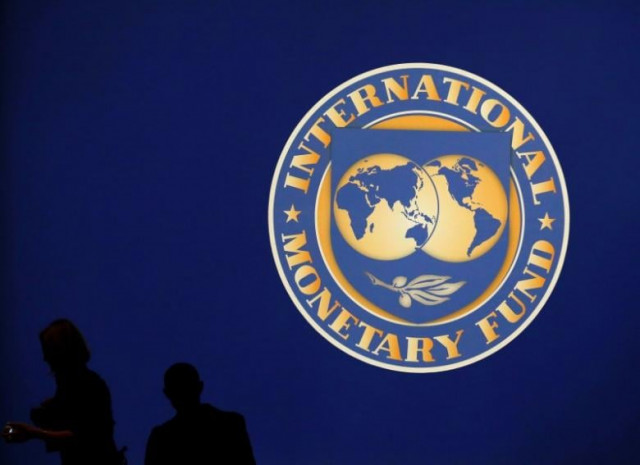Opportunities and risks: Growth prospects of emerging markets rise
IMF report provides an overview of global economic health

PHOTO: REUTERS
According to the WEO, global output is projected to be on track, growing by 3.5% in 2017 and 3.6% in 2018.
Although forecasts of overall world growth have remained broadly unchanged compared to the previous outlook, there exist disparities amongst countries. US projections have been lowered and China’s growth projections have been revised upwards on the expectation of continued fiscal support.
Growth prospects of other emerging markets also remain on the rise, primarily driven by commodity importers. However, the growth pick-up also reflects gradually improving conditions for commodity exporters, who faced recession in 2015-16 caused or exacerbated by declining commodity prices.
The report has also provided an overview and outlook on global commodity prices. Oil prices have receded, reflecting strong inventories in the US and a pick-up in supply.
Headline inflation has decreased due to subdued expectations of a commodity price rebound of the second half of 2016 and inflation targets remaining well below those projected by central banks.
This has not only been the case in advanced economies, but also in emerging economies as well.
Other key economic variables such as long-term bond yields also reflect increased confidence in the economy. Equity prices remain strong in advanced economies as well as emerging markets, reflecting expectations of strong corporate earnings.
Risks to global growth
Risks to this global growth momentum remain. The report has highlighted that although short-term risks remain subdued, there exist medium-term risks to the global economic health, which must be taken into account to achieve sustained growth in the future.
These risks primarily comprise policy uncertainty in advanced economies, financial risks with respect to China and trends towards following inward-looking policies.
The report has laid strong emphasis on the policy uncertainty that exists with regard to the economic policy regime to be adopted by the US government.
There exists uncertainty as to whether the Trump administration will follow a fiscal stimulus approach such as revenue-reducing tax reforms or follow an expenditure-based consolidation. Both would have contrasting effects on growth.
Moreover, it has also been highlighted that it is quite difficult to predict how Brexit negotiations would roll out. This policy uncertainty would harm confidence, deter private investment and weaken growth.
With regard to China, failure to address excessive credit growth and other financial risks could possibly result in a slowdown in growth and adverse spillovers to other countries through trade, commodity prices and confidence channels.
Financial risks also pertain to recent rollback of financial regulation by the US government, which could result in weakening capital and liquidity buffers emphasised after the global financial crisis of 2007-08. This will also weaken the effectiveness of financial regulations and have negative repercussions on the global financial stability.
Finally, over the longer term, failure to make growth more inclusive could further fuel protectionism and inward-looking policies. This can weaken domestic governance and exacerbate internal discord all of which can have negative repercussions on economic activity.
Policy prescriptions
The report has also prescribed certain policy prescriptions for advanced economies and emerging markets to follow to sustain the growth momentum. There should be coordination in fiscal and monetary policies to support reforms aimed at expanding the countries’ supply and growth potential.
Emerging markets are also suggested to make their economies more resilient by strengthening their fiscal positions, diversifying their export base and maintaining strong reserve bases to weather any potential future shocks.
The writer is a doctoral candidate at The Bartlett, UCL
Published in The Express Tribune, August 7th, 2017.
Like Business on Facebook, follow @TribuneBiz on Twitter to stay informed and join in the conversation.



















COMMENTS
Comments are moderated and generally will be posted if they are on-topic and not abusive.
For more information, please see our Comments FAQ